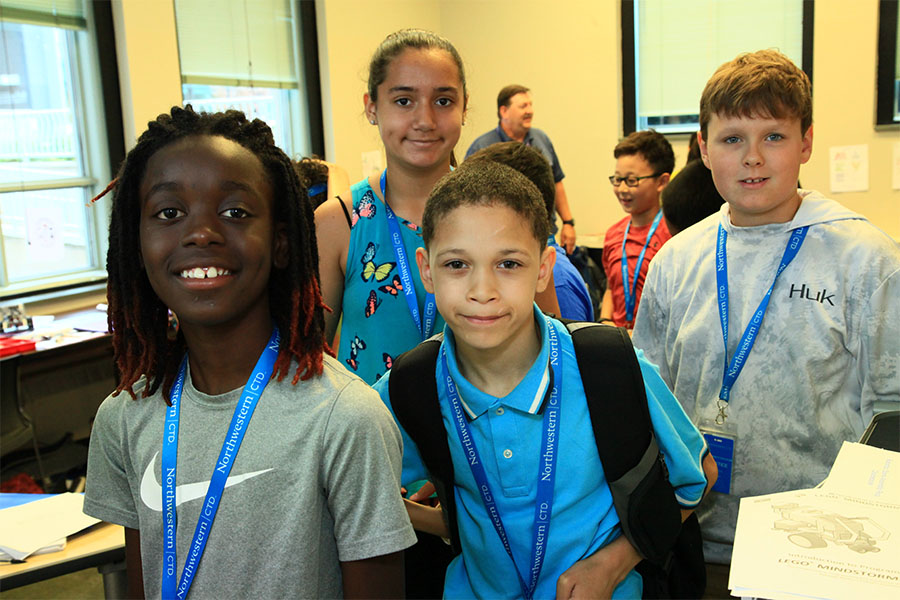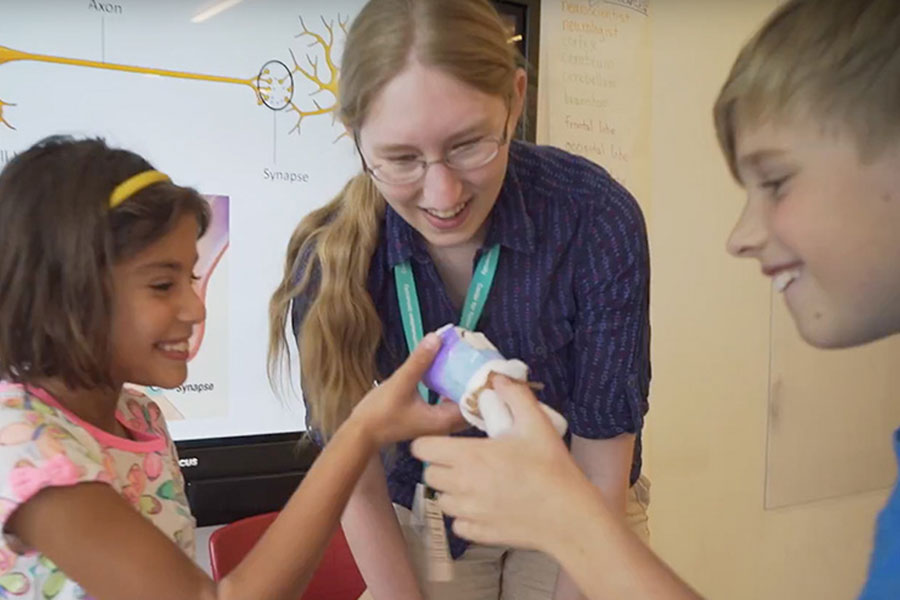Comics Grow Students’ Superpowers
By Beth Dirkes
Parents and teachers might think that because comics or graphic novels are easy to read, they are an appropriate option for reluctant readers. The truth is comics and graphic novels are inviting and interesting to all kinds of readers; and research about how the brain processes images and text presented together confirms the value of reading comics for advanced learners. Comics and graphic novels provide an opportunity for readers to engage on a deeper level by attending to a variety of details in the images and text for added context and nuance. (Check out our blog post Research Behind Graphic Novels and Young Learners for more information about this topic.)
 CTD students have explored their interest in comics in classrooms and in online courses, creating their own stories by hand and with digital tools. Taking a CTD course online doesn’t mean students work only on a screen. In fact, most of the activities for CTD’s online enrichment courses require hands-on exploration of concepts introduced in the course. In Comic Book Characters, an Online Family Program course for second and third graders, students write using both digital tools, such as the Pixton.com and makebeliefscomix.com websites—each of which has a companion tablet app—and handmade drawings and text. Experience with both approaches gives them the opportunity to explore the limitations and advantages of each medium. Posting work in an online course allows each classmate and the instructor to review and comment instantly, so it’s easy to give and receive feedback.
CTD students have explored their interest in comics in classrooms and in online courses, creating their own stories by hand and with digital tools. Taking a CTD course online doesn’t mean students work only on a screen. In fact, most of the activities for CTD’s online enrichment courses require hands-on exploration of concepts introduced in the course. In Comic Book Characters, an Online Family Program course for second and third graders, students write using both digital tools, such as the Pixton.com and makebeliefscomix.com websites—each of which has a companion tablet app—and handmade drawings and text. Experience with both approaches gives them the opportunity to explore the limitations and advantages of each medium. Posting work in an online course allows each classmate and the instructor to review and comment instantly, so it’s easy to give and receive feedback.
For younger students, online apps or websites for making comics provide scaffolding. They include stock characters and images that make it easier for students who are still learning to draw to create a finished product. But using the apps also limits the options, which requires students to consider the best way to tell their story with the tools available to them. They may choose to switch to drawing their own images to convey the mood, show the story’s specific setting or develop their characters more precisely and efficiently. A specific variety of tools are available to creators of comics. For example, showing a character’s face in close-up brings focus to their feelings and presenting an image at an extreme angle signals the disruption of the status quo in the storyline or plot. Creating a comic requires choices about panel variations, gutters, speech bubbles, captioning and more, and each choice may involve a tradeoff.
Layering text and images allows for greater complexity. Exploring comics and graphic novels as both consumers and creators brings young people to an awareness of the impact of that layering and the intentionality behind it. Important information is communicated by text alongside images in many contexts, including science, politics, and business. Understanding this material relies on the reader’s ability to interpret its context and to consider the purpose of the creator. Why is the image presented in this manner? What conclusion does its creator want me to draw? As students reflect on the choices they make as creators, they grow as communicators and become more thoughtful and sophisticated consumers of all kinds of materials. You might even say these skills become their superpowers. CTD is proud to be a part of the origin story of so many super students.
Reflections from second and third grade students who took
Comic Book Characters in the Summer of 2020.
What is something you learned about creating comics?
- - One thing I learned is story elements, the characters are the people or animals in the story, the setting is the place and time, the conflict is all the problems, the resolution is the solution of all the problems.
- - I was fascinated by how to create the mood of a comic.
- - Comics can be used to inform and entertain. The pictures can inform you what the person and things look like. The background, position, and the words in the speech bubbles can tell you a lot of information.
- - One thing that I learned was that when you create a comic the comic must always have pictures to show the mood of the story and that every comic must have a protagonist and an antagonist.
- That it [creating a comic] is harder than it looks.
Did you prefer using digital tools to create your comics or hand drawing your comics? Why?
- - I preferred using digital tools to create my comics because I am not that good at drawing.
- - I preferred doing handwriting because you have more options than the online tools.
- - I like both [digital tools and hand drawing] because when I draw I can create my own characters and when I use digital tools it gives me ideas for what the story can be about.
What did you find challenging in this course?
- - I found it challenging to decide what I was going to write.
- - I found it very challenging to set the mood of the comic.
Did you enjoy taking an online course? Why?
- - I did find it challenging to do this course online but I do love a good challenge! I also wanted to mention that I have started a new comic series.
- - I enjoyed taking an online course because it was easier to write and post everything.
- - I loved seeing other people’s work and learned a lot from them.
 Beth Dirkes is a Family Education Specialist and Assistant Coordinator of PreK-Grade 5 programs at the Center for Talent Development
Beth Dirkes is a Family Education Specialist and Assistant Coordinator of PreK-Grade 5 programs at the Center for Talent Development

